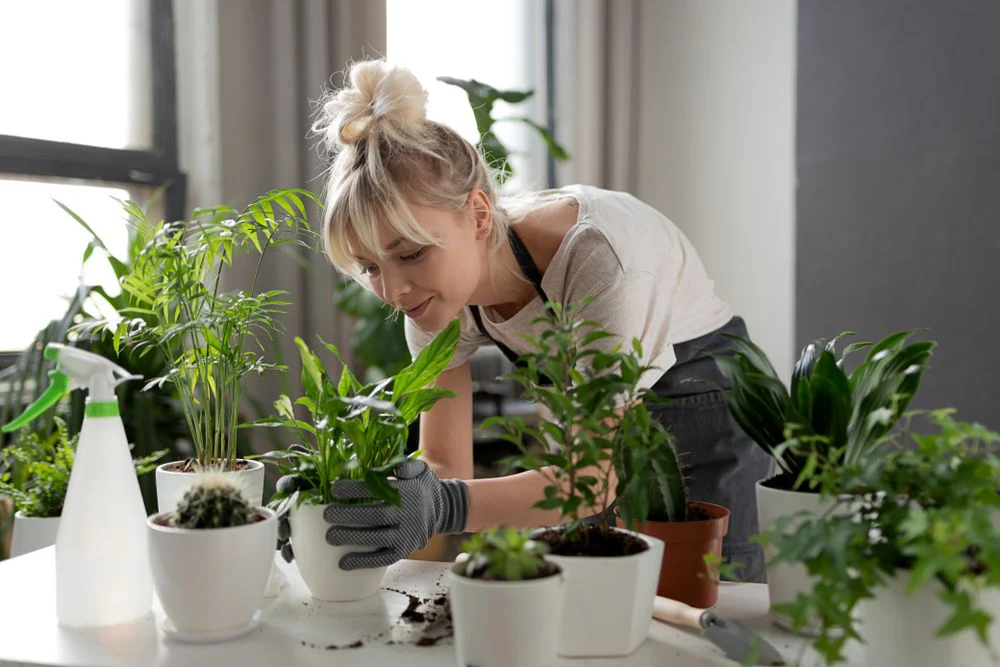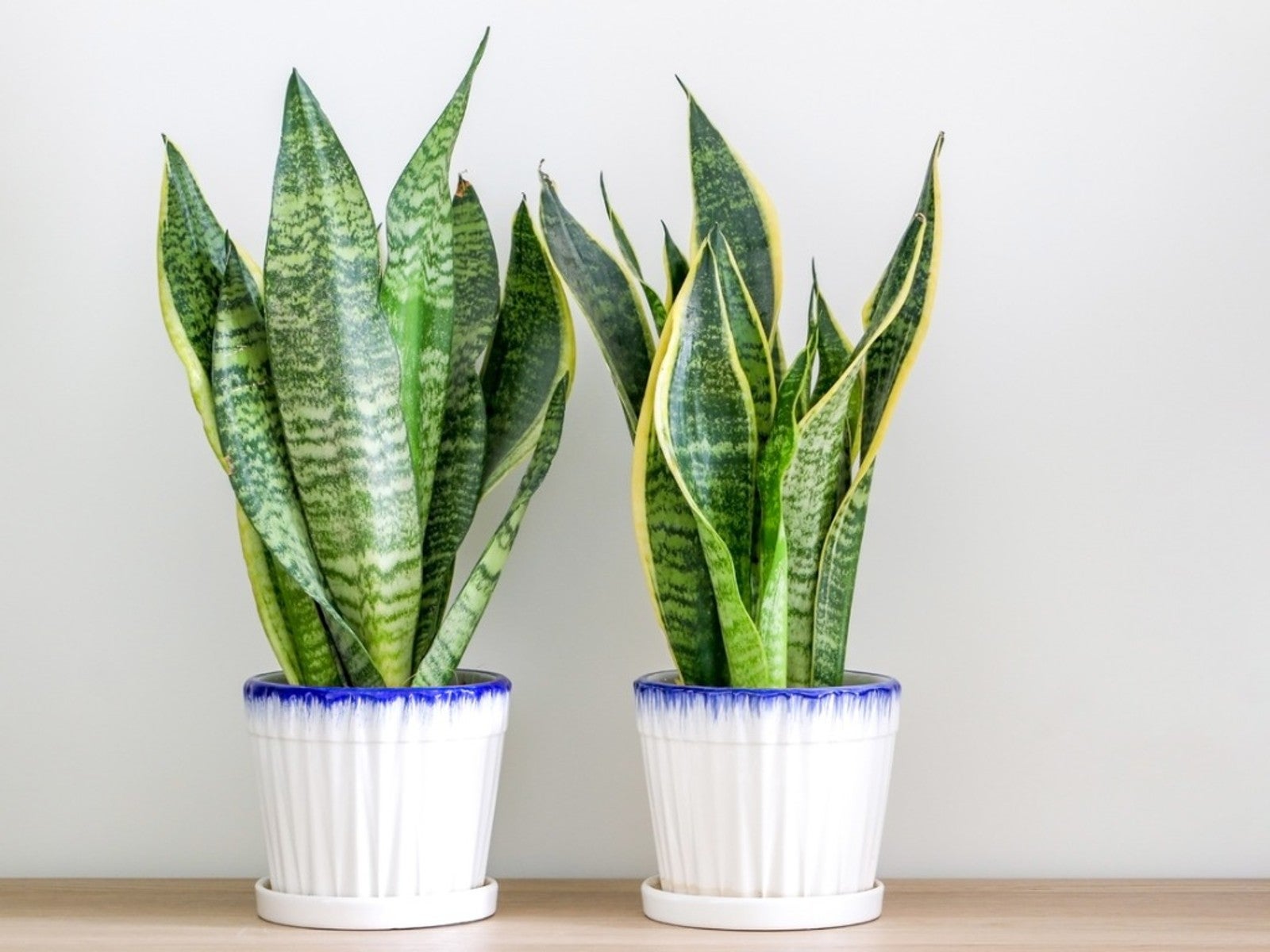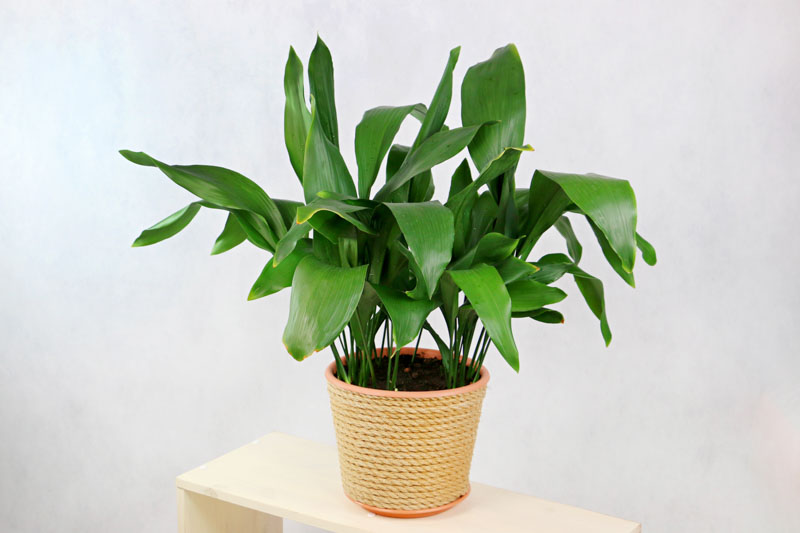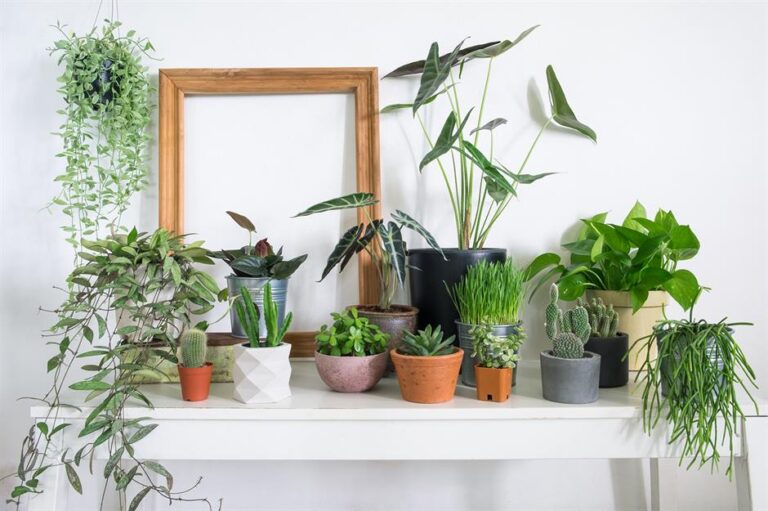Contents
Introduction
Welcome to the exciting world of indoor gardening! If you’ve ever thought about adding a touch of green to your home but felt daunted by the idea, you’re not alone. Indoor gardening can seem tricky, especially when you’re just starting out. But don’t worry—choosing the right plants can make all the difference, and that’s where hardy plants come into play.
Why Indoor Gardening is Worth It
Indoor gardening isn’t just a fun hobby; it’s a great way to brighten up your living space and enjoy the benefits of nature right inside your home. Plants can boost your mood, improve air quality, and even help with productivity. Plus, they add a splash of color and life to any room.
The Challenge for New Gardeners
If you’re new to indoor gardening, you might be worried about keeping your plants alive. Things like lighting, watering, and finding the right spot can be confusing. Many new gardeners struggle with these basics and often end up with plants that just don’t make it.
Why Hardy Plants Are Your Best Bet
This is where hardy plants come in. Hardy plants are like the superheroes of the plant world—they’re tough, adaptable, and forgiving. They can handle less-than-perfect conditions, which is perfect for someone who’s still learning the ropes of indoor gardening.
What Makes Hardy Plants So Great?
Hardy plants are designed to withstand a range of conditions. Whether you have a sunny window or a dim corner, these plants can thrive. They’re also quite forgiving when it comes to watering. So, if you forget to water them now and then, they won’t hold a grudge. Plus, they tend to be low-maintenance, which means you can enjoy the beauty of plants without stressing about their care.
Getting Started with Hardy Plants
In this guide, we’ll walk you through some of the best hardy plants for new indoor gardeners. We’ll cover what makes each plant a great choice, how to care for them, and tips for keeping them healthy. By the end of this guide, you’ll feel confident picking out plants that will thrive in your home, making your indoor garden a success from the start.
So, let’s dive in and discover the hardy plants that will help you get your indoor garden off to a great start!
Understanding Hardy Plants
If you’re new to indoor gardening, you might be wondering what exactly makes a plant “hardy” and why it matters. Let’s break it down in a way that’s easy to understand.

What Makes a Plant Hardy?
Imagine hardy plants as the “low-maintenance” friends of the plant world. They’re pretty flexible and can handle less-than-ideal conditions better than most. Here’s what makes them special:
- Tolerance to Low Light: Many indoor spaces don’t get a ton of sunlight. Hardy plants are great for these spots because they don’t need a lot of light to thrive. Whether your plant is in a room with just a bit of natural light or in a spot that’s mostly shaded, hardy plants can adapt.
- Ability to Handle Irregular Watering: Life can get busy, and sometimes you might forget to water your plants. Hardy plants are forgiving when it comes to watering. They can go longer without water and aren’t as likely to suffer if you forget a watering session now and then.
- Adaptability to Indoor Conditions: Hardy plants are like the chameleons of the plant world. They can adjust to a range of indoor environments, whether it’s a dry climate from your heater or a cooler corner by the window.
Key Characteristics to Look For
When you’re choosing plants for your indoor garden, here are a few traits to look out for:
- Low Maintenance Requirements: Hardy plants don’t need constant attention. They’re perfect if you’re new to gardening or if you’re someone who prefers plants that don’t need a lot of fuss.
- Resilience to Common Pests and Diseases: Indoor plants can sometimes attract pests or get sick. Hardy plants tend to be more resistant to these issues, making them a safer bet for beginners.
So, when you’re picking plants, think about those that can handle a bit of neglect and still look great. Hardy plants are like having a dependable friend who doesn’t need a lot of attention but still makes your life better. In the next sections, we’ll explore some of the best hardy plants that fit these qualities perfectly, helping you kick off your indoor gardening journey with confidence.
Top Hardy Plants for Indoor Gardens
Now that you know what makes a plant hardy and why they’re perfect for new indoor gardeners, let’s dive into some of the best options. These hardy plants are chosen for their ability to thrive in indoor conditions, their low-maintenance needs, and their forgiving nature. Whether you’re a complete beginner or just looking for reliable green companions, these plants are a fantastic starting point.
Snake Plant (Sansevieria)
- Description: The Snake Plant, also known as Sansevieria or Mother-in-Law’s Tongue, is a striking plant with long, upright leaves that come in a variety of green shades with yellow or white edges. It’s known for its architectural look, which can add a modern touch to any room.

- Care Requirements:
- Light Needs: It can thrive in low light but also does well in bright, indirect light.
- Watering Schedule: It prefers to be on the drier side. Water only when the soil is completely dry, typically every 2-6 weeks.
- Temperature and Humidity: It does well in average room temperatures and doesn’t need high humidity.
- Benefits: Snake Plants are excellent at purifying indoor air, removing toxins like formaldehyde and benzene. They’re incredibly low-maintenance and can tolerate neglect.
ZZ Plant (Zamioculcas zamiifolia)
- Description: The ZZ Plant features shiny, dark green leaves that are waxy and thick. It’s known for its attractive, glossy appearance and its ability to adapt to various indoor conditions.
- Care Requirements:
- Light Needs: It can survive in low to bright, indirect light but avoids direct sunlight.
- Watering Schedule: It’s drought-tolerant, so you should water it only when the soil is dry, which can be every 2-3 weeks or longer.
- Temperature and Humidity: It’s comfortable in average indoor temperatures and doesn’t require high humidity.
- Benefits: ZZ Plants are nearly indestructible and great for low-light areas. They also help to clean the air by removing pollutants.
Pothos (Epipremnum aureum)
- Description: Pothos is a popular indoor plant with heart-shaped leaves that come in various shades of green and yellow. It’s known for its trailing vines, which can create beautiful hanging displays or be used to decorate shelves and tables.
- Care Requirements:
- Light Needs: It thrives in low to bright, indirect light. Direct sunlight can scorch the leaves.
- Watering Schedule: Water when the top inch of soil feels dry, usually every 1-2 weeks.
- Temperature and Humidity: Prefers average room temperatures and moderate humidity.
- Benefits: Pothos is incredibly easy to grow and propagate. It’s also great at purifying air and removing indoor pollutants.
Spider Plant (Chlorophytum comosum)
- Description: The Spider Plant is known for its arching, narrow leaves and its ability to produce “babies” or offshoots. It’s a vibrant plant that can add a lush, green touch to any space.
- Care Requirements:
- Light Needs: It does well in bright, indirect light but can tolerate lower light conditions.
- Watering Schedule: Water when the soil is slightly dry, usually every 1-2 weeks. It’s sensitive to fluoride, so use distilled water if possible.
- Temperature and Humidity: Enjoys average room temperatures and moderate humidity.
- Benefits: Spider Plants are excellent at air purification and are known for their ease of propagation, making them a fun and practical choice for new gardeners.
Cast Iron Plant (Aspidistra elatior)
- Description: The Cast Iron Plant is named for its durability. It has dark green, leathery leaves that can add a rich, classic look to your indoor garden.

- Care Requirements:
- Light Needs: It thrives in low to bright, indirect light. Direct sunlight can cause leaf burn.
- Watering Schedule: Water when the top of the soil feels dry, typically every 1-2 weeks.
- Temperature and Humidity: It’s adaptable to various temperatures and doesn’t require high humidity.
- Benefits: True to its name, the Cast Iron Plant is incredibly tough and low-maintenance. It’s perfect for less-than-ideal indoor conditions and still looks great.
Peace Lily (Spathiphyllum)
- Description: The Peace Lily is known for its elegant white flowers and glossy green leaves. It’s a beautiful plant that adds a touch of sophistication to any room.
- Care Requirements:
- Light Needs: Prefers low to bright, indirect light. It can tolerate low light but will flower less.
- Watering Schedule: Keep the soil consistently moist but not soggy. Water when the soil feels slightly dry.
- Temperature and Humidity: Thrives in average room temperatures and enjoys higher humidity.
- Benefits: Peace Lilies are known for their air-purifying abilities and their striking appearance. They’re also relatively easy to care for, making them a great choice for beginners.
Each of these hardy plants brings something unique to the table and can thrive with minimal care. As you start your indoor gardening journey, consider adding some of these plants to your collection. They’re the perfect companions to help you build a beautiful and low-maintenance indoor garden.
Care Tips for Hardy Indoor Plants
Taking care of hardy indoor plants can be straightforward, but knowing a few key tips can make the process even easier. Here’s a guide to help you keep your hardy plants healthy and thriving with minimal fuss.
Watering
- General Guidelines: Hardy plants are forgiving when it comes to watering, but it’s still important to get it right. Generally, you want to let the top inch or so of soil dry out between waterings. This helps prevent root rot and keeps your plants happy.
- Signs of Overwatering: If your plant’s leaves start turning yellow or becoming mushy, it might be a sign of overwatering. This often happens when plants sit in waterlogged soil for too long.
- Signs of Underwatering: On the flip side, if the leaves are looking dry and crispy or the soil feels bone dry, your plant might need a drink. Regularly check the soil to gauge when it’s time to water.
Light Requirements
- Understanding Low Light Conditions: Many hardy plants thrive in low light, which is perfect for indoor spaces that don’t get a lot of direct sunlight. Low light doesn’t mean no light, though; it just means less intense light.
- Adjusting Light Exposure: If your plant is struggling or growing leggy, it might need more light. Move it closer to a window or to a spot that gets indirect sunlight. Conversely, if your plant’s leaves are getting scorched, it might be getting too much direct light.
Temperature and Humidity
- Ideal Temperature Ranges: Most hardy indoor plants do well in typical room temperatures, which usually range from 65°F to 75°F (18°C to 24°C). They’re generally not fans of drastic temperature changes, so try to keep them away from drafts and heat sources.
- Managing Humidity Levels: While hardy plants don’t need high humidity, they do appreciate moderate levels. If your home is very dry, especially in winter, you might consider using a humidifier or placing a tray of water near your plants to increase humidity.
Potting and Soil
- Best Types of Soil: Hardy plants usually do well in standard potting mixes, but some might need specific types. For example, succulents and cacti prefer well-draining soil, while others might be fine with a general-purpose mix.
- Potting Tips: Make sure your pots have drainage holes to prevent water from sitting at the bottom and causing root rot. When repotting, choose a pot that’s just slightly larger than the current one to give the roots room to grow without being too spacious.
By following these care tips, you’ll be setting yourself up for success with your hardy indoor plants. They’re designed to be easygoing, so with a little attention to watering, light, temperature, and potting, you’ll have a flourishing indoor garden in no time.
Common Problems and Solutions
Even hardy plants, with their tough nature, can sometimes face issues. Knowing how to identify and tackle common problems can help keep your indoor garden looking its best. Here’s a straightforward guide to some typical challenges you might encounter and how to solve them.
Pest Issues
- Identifying Common Indoor Pests: Indoor plants can attract pests like spider mites, aphids, and mealybugs. Look out for small, crawling insects or webbing on your plants. You might also notice yellowing leaves or sticky residue on the leaves and nearby surfaces.
- Treatment Options:
- For Spider Mites: Increase humidity around the plant and wipe the leaves with a damp cloth. You can also use insecticidal soap or neem oil.
- For Aphids: Spray the plant with a mixture of water and mild dish soap, or use insecticidal soap.
- For Mealybugs: Remove them by hand or use a cotton swab dipped in rubbing alcohol to wipe them off. A neem oil spray can also help.
Disease Management
- Recognizing Signs of Plant Diseases: Look for symptoms like spots, mold, or mildew on the leaves, as well as stunted growth or wilting. Diseases often thrive in damp conditions, so check your plant’s environment if you notice these issues.
- Preventative Measures and Treatments:
- Fungal Diseases: Ensure good air circulation around your plants and avoid overhead watering, which can promote fungal growth. If you spot mold or mildew, remove affected leaves and treat with a fungicide if necessary.
- Bacterial Diseases: Remove any infected plant parts and improve plant spacing to increase airflow. Avoid watering your plants from above, and use a diluted solution of hydrogen peroxide to help control bacterial issues.
General Troubleshooting
- Common Issues and Solutions:
- Yellowing Leaves: This can be a sign of overwatering or nutrient deficiencies. Check your watering routine and consider using a balanced fertilizer if the plant appears to be lacking nutrients.
- Stunted Growth: This might be due to low light or cramped root conditions. Move your plant to a brighter spot and consider repotting if the roots are outgrowing their container.
- Leaf Drop: If leaves are falling off, it could be due to sudden changes in temperature, drafts, or inconsistent watering. Keep the plant in a stable environment and stick to a consistent watering schedule.
By staying vigilant and addressing these common problems promptly, you’ll help your hardy plants stay healthy and vibrant. Most issues are manageable with a little attention and the right approach, so don’t be discouraged if you encounter challenges. With these solutions in hand, you’ll be better equipped to handle whatever comes your way in your indoor gardening journey.
Getting Started with Indoor Gardening
Embarking on your indoor gardening adventure can be both exciting and a bit overwhelming. But don’t worry! With the right approach and a few helpful tips, you can create a thriving indoor garden that brings joy and greenery to your home. Here’s a step-by-step guide to get you started on the right foot.
Choosing the Right Plants
- Assessing Your Indoor Environment: Take a good look at your home’s lighting conditions, temperature, and humidity levels. Some areas may have bright, indirect light, while others might be dimmer. Understanding these conditions will help you choose plants that will thrive in your specific environment.
- Selecting Plants Based on Your Lifestyle: Consider how much time you can dedicate to plant care. If you’re often busy or prefer low-maintenance options, hardy plants are a great choice. Think about your lifestyle and choose plants that match your level of commitment and care.
Setting Up Your Indoor Garden
- Essential Supplies and Tools: Gather the basics you’ll need to start your indoor garden. This includes pots with drainage holes, quality potting soil, a watering can or tray, and possibly some plant food or fertilizer. You might also want a plant mister for adding moisture.
- Creating a Suitable Growing Environment: Decide where you’ll place your plants based on their light needs. Make sure they’re not in the direct path of drafts or extreme temperatures. Arrange them in a way that suits their light and space requirements. Using plant stands or shelves can help maximize your space and create a beautiful display.
Maintaining Your Indoor Garden
- Regular Care Routines: Establish a routine for checking your plants. This includes regular watering, occasional fertilizing, and inspecting for pests or diseases. Consistent care will help keep your plants healthy and thriving.
- Tips for Long-Term Success: Keep track of each plant’s specific needs and adjust your care routine as necessary. Learning and observing how your plants respond will help you fine-tune their care. Don’t forget to prune or trim plants as needed to promote healthy growth and keep them looking their best.
Starting an indoor garden doesn’t have to be complicated. With a little planning and the right plants, you can create a beautiful and low-maintenance garden that fits seamlessly into your home. By choosing hardy plants and setting up a thoughtful care routine, you’ll be on your way to enjoying the many benefits of indoor gardening. Happy planting!
Conclusion
As you wrap up your journey through indoor gardening with hardy plants, it’s clear that these resilient green companions are ideal for beginners and busy individuals alike. Hardy plants make the world of indoor gardening accessible and enjoyable, offering beauty and benefits without the hassle.
Recap of Hardy Plants Benefits
Hardy plants stand out because of their easygoing nature. They can handle less-than-perfect conditions, making them perfect for those who might not have a green thumb just yet. With their tolerance for low light, irregular watering, and varying indoor environments, they take a lot of the guesswork out of plant care. Plus, many hardy plants have air-purifying qualities, adding to their appeal by improving the air quality in your home.
Encouragement to Start Gardening
Now that you have a solid understanding of the best hardy plants and how to care for them, it’s time to get started with your indoor garden. Don’t let a fear of plant care hold you back. With these hardy options, you’re well-equipped to create a lush, vibrant space that brings life and joy to your home.
Remember, indoor gardening is a journey, not a destination. You’ll learn and grow alongside your plants, and even small successes can be incredibly rewarding. As you gain confidence, you might find yourself eager to explore more plant varieties and gardening techniques.
Final Tips for New Indoor Gardeners
- Start Small: Begin with a few hardy plants and expand as you become more comfortable with their care.
- Be Patient: Plants take time to grow and adjust. Give them the care they need and be patient as they thrive.
- Enjoy the Process: Indoor gardening is meant to be enjoyable. Take pleasure in the process of nurturing your plants and watching them grow.
Resources for Further Learning
To deepen your knowledge and keep growing your skills, consider exploring additional resources. Books, online guides, and plant care apps can provide valuable information and tips. Joining local gardening groups or online forums can also be a great way to connect with fellow plant enthusiasts and get advice.
So, gather your pots, pick your plants, and start creating your own indoor oasis. With hardy plants as your foundation, you’re set for a rewarding and fulfilling gardening experience. Happy gardening!



